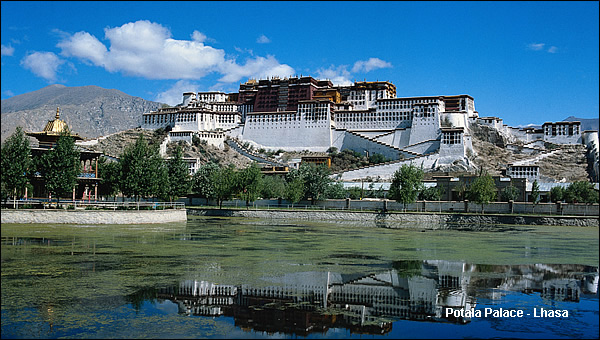Lhasa Tour Tour Typ: Hotel
Tour Duration: ( 10-15 Days) Kathmandu -Kathmandu
Max-Altitude: 3830m
Best Season : May- June and August – November
Lhasa is a city and administrative capital of the Tibet Autonomous Regin of the China. Lhasa is the second most populous city on the Tibetan plateau after Xining and, at an altitude of 3,490 metres, Lhasa is one of the highest cities in the world .The city has been the religious and administrative capital of Tibet since the mid-17th century. It contains many culturally significant Tibetan Buddhist sites such as the potala place Jokhang Temple and Norbulinka Palaces.
By the mid 7th century, Songtsen Gampo became the leader of the Tibetan Empire that had risen to power in the Brahmaputra River Valley. After conquering the kingdom of shangshung in the west, he moved the capital from the Chingwa. in CE 639 and 641, Songtsen Gampo, who by this time had conquered the whole Tibetan region, is said to have contracted two alliance marriages, firstly to a Princess Bhrikuti of Nepal, and then, two years later, to princess Wencheng of the Imperial Tang court. Bhrikuti is said to have converted him to Buddhism which was also the faith attributed to his second wife Wencheng.
From the fall of the monarchy in the 9th century to the accession of the 5th Dalai lama, the centre of political power in the Tibetan region was not situated in Lhasa. However, the importance of Lhasa as a religious site became increasingly significant as the centuries progressed.It was known as the centre of Tibet where padmasambhava magically pinned down the earth demoness and built the foundation of the Jokhang Tempal over her heart. Islam has been present since the 11th century in what is considered to have always been a monolithically Buddhist culture. Two Tibetan Muslim communities have lived in Lhasa with distinct homes, food and clothing, language, education, trade and traditional herbal medicine.
By the end of the 17th century, Lhasa’s Barkhor area formed a bustling market for foreign goods. The Jesuit missionary, Ippolito Desideri reported in 1716 that the city had a cosmopolitan community of Mongol, Chinese, Muscovite, Armenian, Kashmiri, Nepalese and Northern Indian traders. Tibet was exporting musk, gold, medicinal plants, furs and yak tails to far-flung markets, in exchange for sugar, tea, saffron, Persian turquoise, European amber and Mediterranean coral. After the establishment of communist Chinese peoples republic of china the People’s Liberation Army invaded the country in 1950. In march 1959,an uprising centered on the capital Lhasa, prompted a massive crackdown, during which the Dalai lama Tenzin Gyatso (b 1935) fled into exile. Such markets and consumerism came to an abrupt end after the arrival of Chinese government troops and administrative cadres in 1950. Of the 22 parks which surrounded the city of Lhasa, most of them over half a mile in length, where the people of Lhasa were accustomed to picnic, only three survive today the Norbulingka. Dalai Lama’s Summe Palace, a small part of the Shugtri Lingka, and the Lukhang Dormitory blocks, offices and army barracks are built over the rest.

